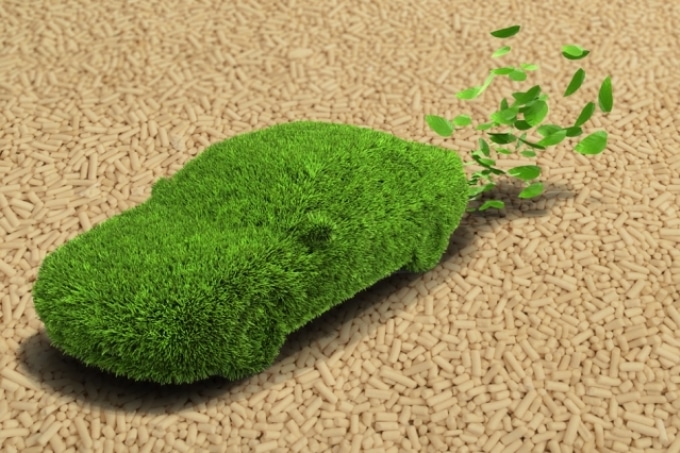Jan 18 2017
 "Diesel is the preferred fuel because of its high energy density and the high efficiency of the engines that run on diesel," professor Gregory Stephanopoulos says. "The problem with diesel is that so far it is entirely made from fossil fuels." CREDIT: Jose-Luis Olivares/MIT.
"Diesel is the preferred fuel because of its high energy density and the high efficiency of the engines that run on diesel," professor Gregory Stephanopoulos says. "The problem with diesel is that so far it is entirely made from fossil fuels." CREDIT: Jose-Luis Olivares/MIT.
Researchers from MIT have carried out genetic reprogramming of a specific yeast strain so that it performs more efficient conversion of sugars to fats. This advance could make the renewable production of high-energy fuels possible.
Guided by Gregory Stephanopoulos, who is the Willard Henry Dow Professor of Chemical Engineering and Biotechnology at MIT, the researchers worked to modify the metabolic pathways of yeast that have been known to naturally yield greater quantities of lipids, making them nearly 30% more efficient.
The research has been published in Nature Biotechnology in the January 16th issue.
We have rewired the metabolism of these microbes to make them capable of producing oils at very high yields.
Gregory Stephanopoulos, Professor, MIT
This advancement might enable the production of renewable high-energy fuels to be economically plausible. Moreover, the MIT researchers are now engaged in bringing about added enhancements that can aid in getting nearer to their aim.
“What we’ve done is reach about 75 percent of this yeast’s potential, and there is an additional 25 percent that will be subject of follow-up work,” stated Stephanopoulos.
Kangjian Qiao, former MIT postdoc, is the lead author of the study. Former MIT graduate students Thomas Wasylenko and Kang Zhou, and former MIT postdoc Peng Xu are the co-authors.
High-Energy Fuels
Despite the fact that renewable fuels like ethanol produced from corn are practically utilized as additives in gasoline used for cars, large vehicles such as trucks, airplanes, and ships mandate the use of powerful fuels such as diesel.
Diesel is the preferred fuel because of its high energy density and the high efficiency of the engines that run on diesel. The problem with diesel is that so far it is entirely made from fossil fuels.
Gregory Stephanopoulos, Professor, MIT
Although attempts toward developing engines running on biodiesel produced from used cooking oils have found little success, large-scale use has been hampered because cooking oil is expensive and comparatively scarce. Before using inexpensive and abundant starches such as corn and sugar cane, they must be converted into lipids, which can be ultimately converted into high-density fuels such as diesel.
In order to reach this goal, Stephanopoulos and his collaborators started their analysis using a strain of yeast called Yarrowia lipolytica, with the ability to naturally produce greater quantities of lipids. The team thoroughly concentrated on completely exploiting the electrons generated during the glucose breakdown.
They achieved it by transforming Yarrowia with synthetic pathways with the ability to convert surplus NADH (a product of glucose breakdown) into NADPH, used for synthesizing lipids. This led the team to test over a dozen modified synthetic pathways.
It turned out that the combination of two of these pathways gave us the best results that we report in the paper. The actual mechanism of why a couple of these pathways work much better than the others is not well-understood.
Gregory Stephanopoulos, Professor, MIT
The improved pathway limited the amount of glucose required by the yeast cells to only two-thirds of that normally required by unmodified yeast cells for producing the same amount of oil.
Better Efficiency
According to Stephanopoulos, apart from the fact that the new glucose-to-lipid conversion procedure is economically plausible at current production costs, the researchers are aiming to further enhance the process efficiency.
“There is still room for more improvement, and if we push more in this direction, then the process will become even more efficient, requiring even less glucose to produce a gallon of oil,” he explained.
The team is also investigating the use of inexpensive plant material sources (e.g. agricultural waste and grass), which might require conversion of the cellulose in the plant materials into glucose.
The U.S. Department of Energy funded the study.